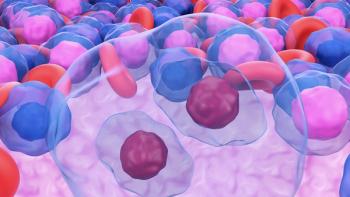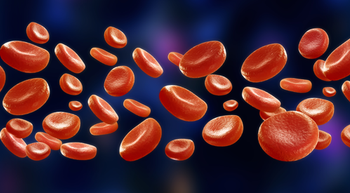
Midostaurin Gains FDA Approval for AML
The FDA has approved midostaurin (Rydapt) for the treatment of adult patients with acute myeloid leukemia.
The FDA has approved midostaurin (Rydapt) for the treatment of adult patients with newly diagnosed FLT3-positive acute myeloid leukemia (AML) in combination with standard cytarabine and daunorubicin induction and cytarabine consolidation.
The drug has also been approved for the treatment of patients with aggressive systemic mastocytosis (ASM), SM with associated hematological neoplasm (SM-AHN), and mast cell leukemia.
Midostaurin was approved along with a companion diagnostic, the LeukoStrat CDx FLT3 Mutation Assay, to test for FLT3 mutations in patients with AML.
The approval is based on the phase III RATIFY trial in AML and a single-arm phase II study of patients with SM. In the RATIFY trial, the addition of midostaurin to standard chemotherapy reduced the risk of death by 23% compared with chemotherapy alone in patients with AML who harbored an FLT3 mutation. After censoring for patients who received stem cell transplants, the overall survival (OS) benefit with midostaurin remained steady at 25%.
In the phase II trial considered for the approvals beyond AML, among patients receiving 6 cycles of midostaurin, the rates of confirmed complete remission (CR) plus incomplete remission (ICR) by modified Valent criteria were 38% for ASM and 16% for SM-AHN. One patient with mast cell leukemia had a CR.
In the phase III RATIFY trial, also known as CALGB 10603, 717 patients with newly diagnosed FLT3-mutant AML were randomized to standard induction and consolidation chemotherapy plus midostaurin (n = 360) or placebo (n = 357). Hydroxyurea was allowed for up to 5 days prior to beginning therapy, while FLT3 test results were obtained.
During induction therapy, daunorubicin was given at 60 mg/m2 on days 1 to 3 with cytarabine at 200 mg/m2 on days 1 to 7. Oral midostaurin was administered at 50 mg twice daily on days 8 to 22. If patients achieved a complete remission, consolidation therapy was given with cytarabine at 3 g/m2 for 3 hours every 12 hours on days 1, 3, and 5 plus either placebo or midostaurin. After 4 cycles of consolidation, maintenance therapy with either midostaurin or placebo was administered for up to 1 year.
The 2 treatment arms were well balanced for age (median, 48 years), race, FLT3 subtype, and baseline complete blood counts. There were more males in the midostaurin arm versus placebo (48.2% vs 40.6%). The primary endpoint of the study was OS, with secondary outcome measures such as event-free survival (EFS) and safety.
In uncensored data, median OS was 74.7 months with midostaurin versus 25.6 months with chemotherapy alone (HR, 0.77; P = .0074). The 5-year OS rate for patients in the midostaurin arm was 50.9% versus 43.9% with placebo. Median EFS in the midostaurin arm was 8.0 versus 3.6 months with placebo (HR, 0.79; P = .0032). The 5-year EFS rate with midostaurin was 27.5% versus 19.3% with placebo.
Median OS seen in the midostaurin arm was well beyond investigator expectations of 20.9 months. A possible explanation for this could be the rates of stem cell transplantation or incomplete data. The confidence intervals for OS were not fully attained for the midostaurin arm (95% CI, 31.7 - not attained).
Overall, 57% of patients received an allogeneic stem cell transplant at any time during the trial, more commonly in the midostaurin arm versus placebo (58% vs 54%). Median time to transplant was 5.0 months with midostaurin and 4.5 months with placebo. Twenty-five percent of transplants occurred during the first complete remission. Overall, 59% of patients in the midostaurin arm and 54% in the placebo group experienced a complete remission (P = .18).
Median OS data were not obtained in the censored population. Overall, the 4-year censored OS rate with midostaurin was 63.8% versus 55.7% for placebo (HR, 0.75; P = .04). In those censored for transplant, median EFS with midostaurin was 8.2 versus 3.0 months with placebo (HR, 0.84; P = .025).
Grade ≥3 AEs were similar between the midostaurin and placebo arms. Overall, 37 grade 5 AEs occurred in the study, which were similar between the 2 arms, at 5.3% with midostaurin versus 5.0% with placebo. A statistically significant difference was not observed for treatment-related grade 5 AEs (P = .82).
Newsletter
Knowledge is power. Don’t miss the most recent breakthroughs in cancer care.

















































































